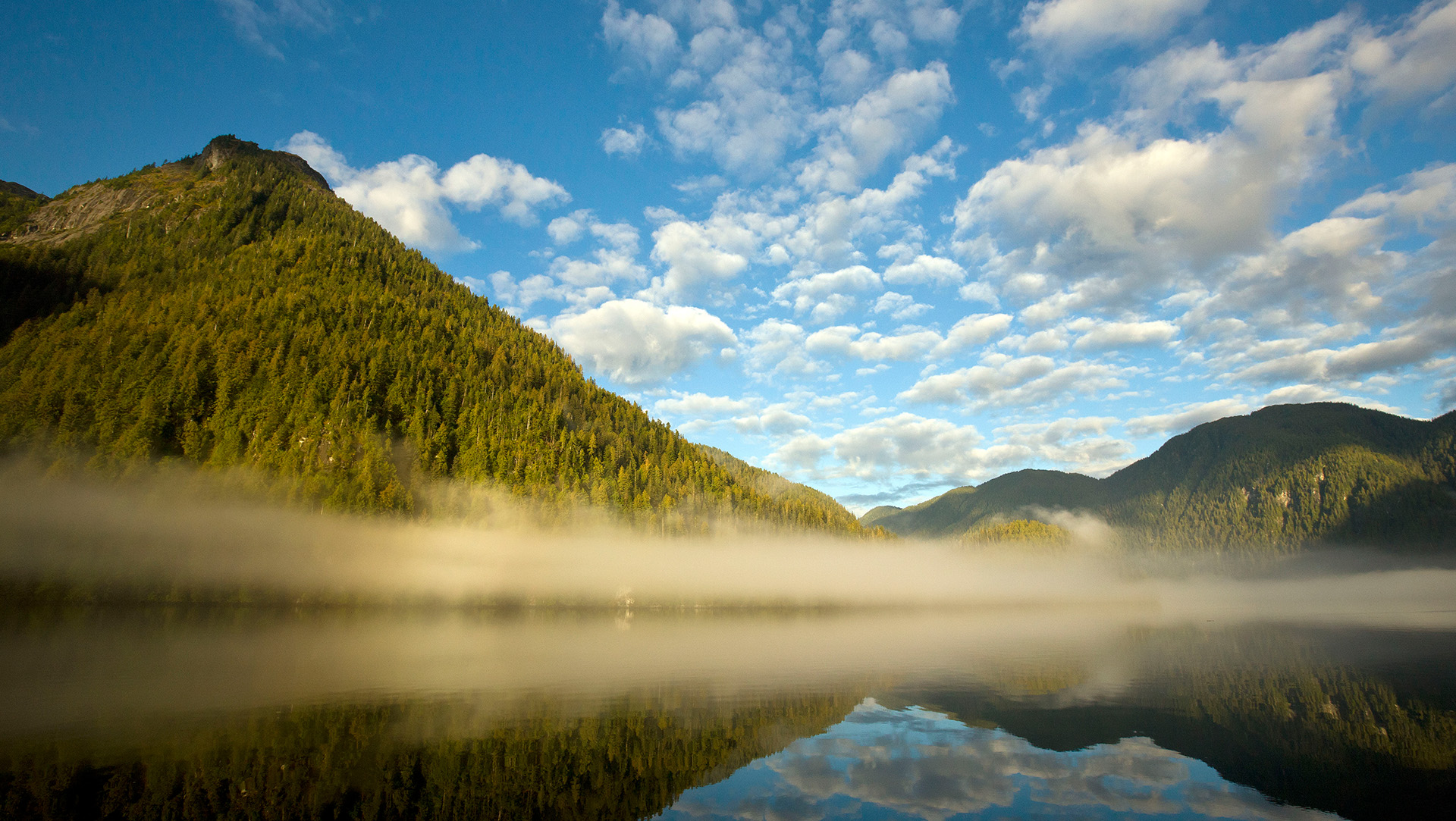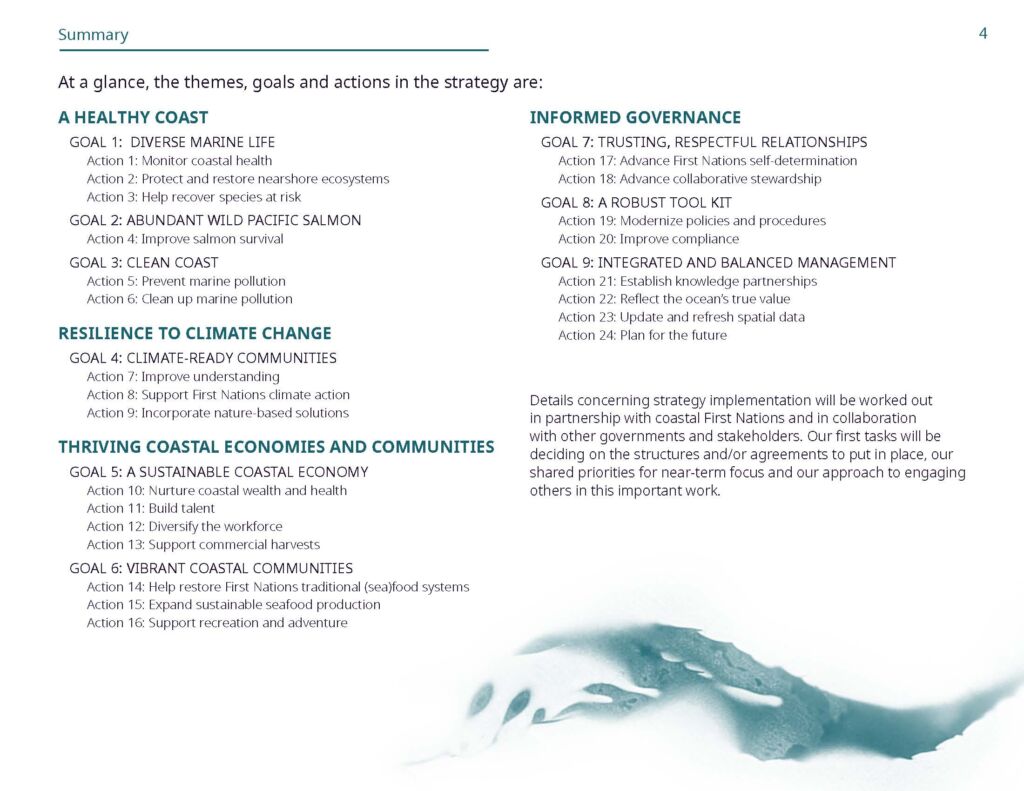Estimated Reading time

4 Mins
A Shared Strategy for Safeguarding Our Coast
BC’s new Coastal Marine Strategy places Indigenous Nations at the forefront of decision-making.

Earlier this month, the Province of British Columbia released its Coastal Marine Strategy, which outlines a shared vision and action plan for sustainable management of coastal environments. To build the strategy, the Province worked closely with First Nations communities, experts, and stakeholders over two and a half years.
Central to the strategy is the preservation and restoration of coastal ecosystems. Recognizing the interconnectedness of these fragile environments, the plan outlines specific actions to enhance resilience to climate change and promote sustainable economic activities along the coast. The new strategy also aligns with BC’s commitment to the United Nations Declaration on the Rights of Indigenous Peoples (UNDRIP).
The BC Coastal Marine Strategy covers four key themes:
- fostering healthy marine ecosystems,
- building resilience to climate impacts,
- supporting vibrant coastal economies and communities, and
- ensuring informed governance.
These themes are supported by nine strategic goals and 24 actionable items that will shape decisions over the next 20 years. The goals and actions involve safeguarding and reviving marine ecosystems, overseeing marine resources, and empowering Indigenous stewardship in coastal regions. First Nations on the coast have opportunities to get involved, share their knowledge, and partner with government and conservation groups.
These themes are supported by nine strategic goals and 24 actionable items that will shape decisions over the next 20 years. The goals and actions involve safeguarding and reviving marine ecosystems, overseeing marine resources, and empowering Indigenous stewardship in coastal regions. First Nations on the coast have opportunities to get involved, share their knowledge, and partner with government and conservation groups.

“BC’s Coastal Marine Strategy is an important step forward for our precious coasts and oceans. It is both an ambitious set of goals and actions to promote resilience for people and nature, and an inspiring model of collaborative policy development,” says K̓áwáziɫ Marilyn Slett, president of the Coastal First Nations-Great Bear Initiative in a news release. “First Nations across the Great Bear Sea were pleased to contribute to the coastal marine strategy, and we look forward to continuing our work with the Province of BC to advance our shared priorities for healthy seas and healthy communities.”
First Nations have been responsible for the management of their coastal territories for thousands of years, carefully maintaining a sustainable balance for both communities and ecosystems. By drawing on stewardship traditions and ecological knowledge, First Nations, and Indigenous organizations played a crucial role in informing the priorities of the coastal marine strategy.

With the release of this strategy, First Nations are being positioned at the front of the decision-making processes for implementing strategies according to their inherent rights to protect the coast. The principle that First Nations are at the front of decision-making means that Indigenous communities have a leading role in shaping policies and decisions that affect them. This approach prioritizes their rights, perspectives, and expertise in matters related to their lands, resources, and communities.
“The release of this new strategy allows Indigenous knowledge and western science to work together for a healthier ocean, while still respecting traditional rights and practices along the whole coast of BC,” says Eddy Adra, CEO, Coast Funds. “The Coastal Marine Strategy is of great importance to Coast Funds and the nations we serve, as it complements our mission to support investments in conservation, stewardship, and sustainable management of natural resources in coastal and marine environments.”
The strategy represents a shift from current coastal management practices, and a more coordinated approach is expected to bring advantages to both coastal ecosystems and communities. This is the first approach to tackle the entire coastline at once.

First Nations will develop management strategies through initiatives like the Great Bear Sea Marine Protected Area (MPA) Network and other coastal projects. These efforts will also contribute to climate adaptation work, specifically related to BC’s Coastal Marine Strategy.
Implementation details will be completed in partnership with coastal First Nations, ensuring that the strategy’s initiatives are resilient against political shifts and adequately funded to achieve their long-term objectives.
As the Great Bear Sea project finance for permanence (PFP) is implemented, participating First Nations will have access to stable funding, through Coast Funds, for marine stewardship and community-based economic development, which can align with BCs Coastal Marine Strategy objectives.
Timeline and Resources
- December 2022: Intentions Paper, co-developed with coastal Nations, released for public comment.
- August 2023: ‘What We Heard’ Report published, summarizing the results of the engagement process.
- July 2024: BC Coastal Marine Strategy released, with a map of the coastal marine environment.
